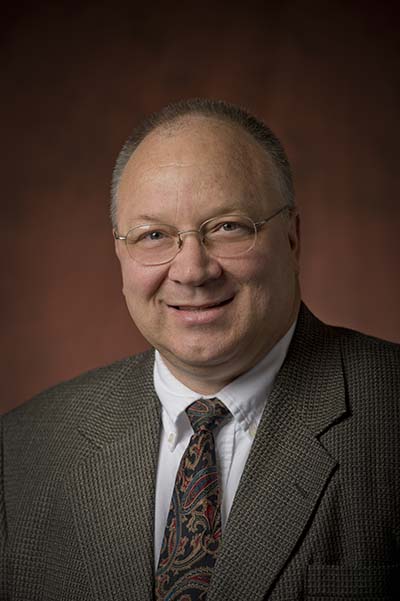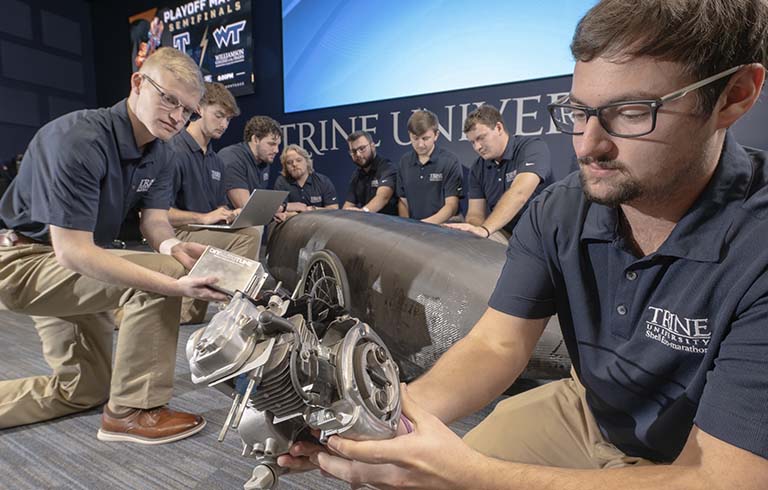 A Trine University faculty member recently authored an article on the mathematics
supporting a common data encryption method published in a peer-reviewed journal.
A Trine University faculty member recently authored an article on the mathematics
supporting a common data encryption method published in a peer-reviewed journal.
William Barge, Ph.D., associate professor in Trine’s Department of Computer Science
and Information Technology, wrote "The Mathematics Behind RSA Encryption," published
in the May 2019 issue of the Information Systems Security Association (ISSA) Journal.
The ISSA is a not-for-profit, international organization of information security professionals
and practitioners, dedicated to advancing individual growth, managing technology risk
and protecting critical information and infrastructure.
Barge, an ISSA member, has taught information security at Trine since 2008. In 2013,
he wrote a program in the Java programming language to check students’ solutions to
an assignment involving the Rivest, Shamir, and Adleman (RSA) cryptosystem, an encryption
algorithm commonly used to securely hide confidential information in online transactions
and to encrypt user ids and passwords on most websites using Secure Hypertext Transfer
Protocol (https).
“I found that Java could not accommodate the value of exponential expressions applied
to large prime numbers,” he said. “I knew my PC’s browser did not throw an error when
I made a web purchase. The ‘how does this work in real life’ quest led me to start
learning an area of mathematics called Number Theory. Using a few proofs and theorems,
and a lot of trial and error, I was able to incorporate mathematical shortcuts into
my Java code. I thought others might benefit from seeing these shortcuts.
“My target audience was a programmer looking for ideas on how to keep the value of
an exponential expression from getting too large, a mathematician who is interested
in Number Theory, or anyone interested in learning the mathematics behind RSA.”
Barge said without systems like RSA, people would not be able to communicate securely
and confidentially over the Internet with businesses or others with whom they did
not have some prior relationship. As an example of the dangers of communicating over
an unencrypted system, he noted students in Trine’s Computer Science & Information
Technology (CSIT) practice how to capture Internet traffic and extract the messages
being sent.
“In the labs done in class, I have had students find messages, reassemble photographs
and other files, and track me as I have navigated through the Internet,” he said.
“The students have not only had to identify what web sites I visited, but also identify
the user ids and passwords I used. It is getting harder every year to find websites
that do not adequately protect user ids and passwords.”

 A Trine University faculty member recently authored an article on the mathematics
supporting a common data encryption method published in a peer-reviewed journal.
A Trine University faculty member recently authored an article on the mathematics
supporting a common data encryption method published in a peer-reviewed journal.
